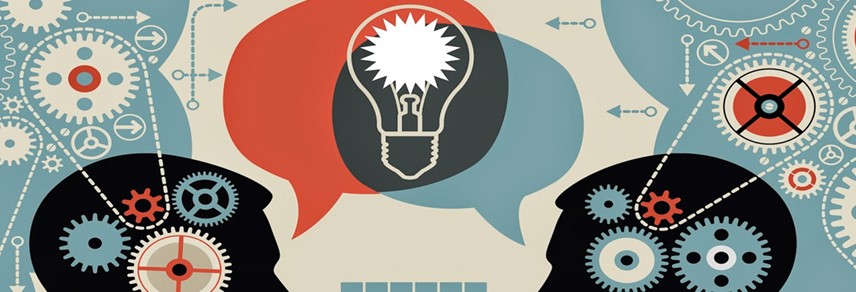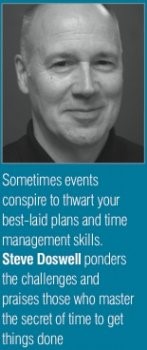
PRODUCTIVITY, NOT CONNECTIVITY
“Sometimes it’s essential to put on the ‘do not disturb’ red light in order to tackle the big stuff and no one should feel bad about it"
 'Send it to my home account. I don't have time to read anything at work,' I told a friend and colleague a couple of weeks ago when she asked me to take a look at a book synopsis that she'd written. Driving home later, I pondered what conclusion could be taken from my message.
'Send it to my home account. I don't have time to read anything at work,' I told a friend and colleague a couple of weeks ago when she asked me to take a look at a book synopsis that she'd written. Driving home later, I pondered what conclusion could be taken from my message.
My working day is full-on. There's always a rack of big ticket priorities that I've planned to tackle and I fight the daily fight to ring-fence time and get them done. Too often, though, they don't. On a bad day so many issues arise that it can feel like an enemy attach on one's best-laid plans, although it's more a case of 'friendly fire.' There’s nothing substantial – mostly queries answered, calls returned and an assorted ragbag of loose ends of tasks and actions in danger of unravelling and in need of a swiftly-applied knot.
Sometimes it can feel like an air traffic controller trying to manage an airport’s daily schedule of take-offs and landings while bombers strafe the runway. Hyper-efficient superheroes with a total mastery of time (I’m sure they exist) may not recognise this picture. But other mere mortals reading this may be shell-shocked with their own reverberating memory of days under fire in the conning tower.
However, something happened last week. Call it chance or serendipity, but I went to work and left my mobile charging at home. After the initial panic of feeling that I had been from my digital ‘mother’ untimely ripped, it turned out to be my most productive day of the week. There was still ‘incoming’ to deal with but the volume was manageable and, by close of business, I felt more than satisfied. I’d worked through the priority list and I was, well, de-mob happy. Now I’m not actually advocating hiding the smartphone or otherwise making oneself unavailable as a standard working practice (it's tempting, though), but sometimes it's essential to put on the 'do not disturb' red light in order to tackle the big stuff and no one should feel bad about it.
By contrast, I notice that several people who I like to see as my professional peers have been leading extra-productive lives (note to self: ask them what potions they're taking to manage their time so well). These paragons have turned their thoughts to writing about what they've learned and practised over the years, the conclusions they've reached, the routes to success and the blind alleys to avoid. One has spent recent years working with leadership teams around the world following an in-house career, another has built a successful agency, a third runs an impressive training enterprise and has yet found time to build an academic career in parallel – God knows how (other deities also available), but I am in awe
and admiration.
Each has proved him- or herself adept at carving out the time to think, to read, to plan and to write. But how? Time is not infinite, although space-time may have curves, kinks, ripples (see Hawkins, S.) and other oddities (see Bowie, D.).You can’t hold it back (see Wilson, B. and Parks, V.D.) and you certainly can’t turn it back (see Cher). So they’re hewing chunks of time from somewhere. In my worst moments of time poverty, I wistfully imagine an El Dorado time-mine in which precious hours and minutes can be seen glistening in the ore, waiting to be extracted and put to good use.
I have research and writing projects of my own. Where’s that time-mine? Time to find out.
Steve Doswell is chief executive of the Institute of Internal Communication



